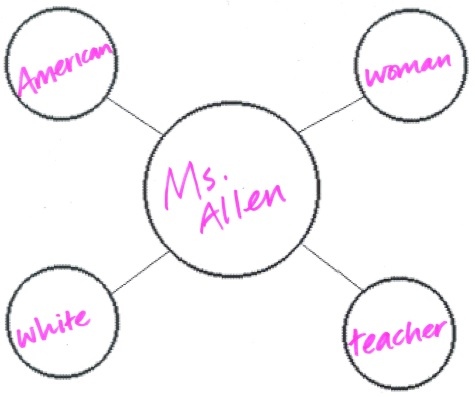|
| |||
I’m not a _____! Questioning StereotypesMarjorie Allen, Harper College “Why do Americans love guns?” “You’re from Saudi Arabia? How many wives do you have?” “Why do Korean people always look mad?” I have heard many variations on these FARQs (frequently asked rude questions) in my classes, and you probably have too. Sometimes these conversations develop into a meaningful exchange and an inkling of cross-cultural understanding; other times they result in an argument. Even as one student tried to explain that the stereotypes his classmates had about his culture were ill-informed simplifications, he still maintained that the generalizations he had made about his classmates’ cultures were obviously true. Clearly, simply occupying the same room did not result in cultural understanding. Nor did my well-intentioned mediating have much of an effect on any preconceived notions. As I was searching for resources, a colleague recommended Paul C. Gorski’s www.edchange.org, a website dedicated to equity and social justice in education. Using materials from this website, I developed a reading/writing module for an advanced ESL reading class that focused on stereotype awareness.
The textbook, Reader’s Choice Split Edition, based on the 5th Edition, supplies the central reading of the module, “The Stereotype of Stereotypes.” The article begins with a joke, “Heaven is a place with an American house, Chinese food, British police, a German car, and French art. Hell is a place with a Japanese house, Chinese police, British food, German art, and a French car” (Silberstein, Dobson, & Clarke, 2008, p. 117). Students free-write their personal reaction, share with a partner, and then we discuss as a class, defining stereotype and other related vocabulary. After our discussion, students go out into campus in pairs and find three different people to interview. They ask the people to read the joke and say whether they think it is funny. They also ask the interviewees why they think someone would characterize heaven and hell this way. During the interview report-out, students are surprised at the range of reactions they heard and we have a lively discussion of the joke. For homework, students summarize the interviews and their opinions in a brief essay. Additionally, they read the article and identify the two positions on stereotypes described. In the next class, pairs work together to answer comprehension questions about the article, identifying the sentences in the reading that helped them choose their answers. After identifying the positives and negatives of stereotyping described in the article, students spend subsequent classes exploring assumptions based on sexual, cultural, and racial stereotypes. We read an essay detailing the insulting way men are often portrayed in commercials and research how men and women are portrayed in current TV advertising. Students reflect on their own experiences, writing responses to one or two of the “Boy/Girl Stories” topics, such as “What messages do you send to others regarding what it means to be a boy or a girl or a man or a woman?” (Gorski). We watch the first 10-15 minutes of the movie Crash and analyze the stereotypes that underlie the assumptions characters make about each other. As a follow-up, students write another reflection describing the positive and negative stereotypes they have heard about their own cultures. The module’s culminating activity, “Circles of My Multicultural Self” (Gorski) gets students to think about how they define themselves and to question stereotypical associations with those groups. Detailed instructions and printable handouts can be found on the EdChange website. First, students begin by brainstorming lists of nouns and adjectives that describe parts of their identity. I model on the board, and my list typically looks like this:
Then, I choose four words that I think are strong parts of my identity and write them in marker on the circles handout. Students fill in their handouts. After I tell example stories, in small groups students describe times when they felt pride and shame to be associated with some of the words on their handout. Next we all write sentences that acknowledge a common stereotype that we do not think is true about us. We follow the structure suggested in the “Circles” activity: “ I am a _____, but I am not a _____.” (Gorski) On my paper, I typically write: I am a woman, but I am not a bad driver. It almost always gets a laugh out of the group and sets off a burst of discussion. Nevertheless, as students compose their sentences, they become quite thoughtful. Students have written sentences such as
Although culturally diverse classrooms hold great potential for learning, they can also have misunderstanding and conflict. Many ESL students express astonishment at the diversity of the U.S. population. After spending some time here, students are often surprised to discover that people make assumptions about them based on the way they look and speak. The objective of the stereotypes module is not to eliminate FARQs, but to have students realize that we all make judgments about each other. With practice, students will recognize when they make assumptions about others and question why they make these assumptions. The www.edchange.org website has many cross-cultural understanding activities. I hope that this lesson outline will inspire you to explore the site and consider incorporating some of them. References Gorski, P. C. (n.d.). EdChange. Retrieved from The Multicultural Pavilion: http://www.edchange.org/multicultural/activityarch.html Silberstein, S., Dobson, B. K., & Clarke, M. A. (2008). Reader's Choice Split Edition Based on the 5th Edition. Ann Arbor: The University of Michigan Press. Marjorie Allen teaches academic ESL at Harper College in Palatine, IL | |||
| ITBE Link - Summer 2015 - Volume 43 Number 2 | |||
